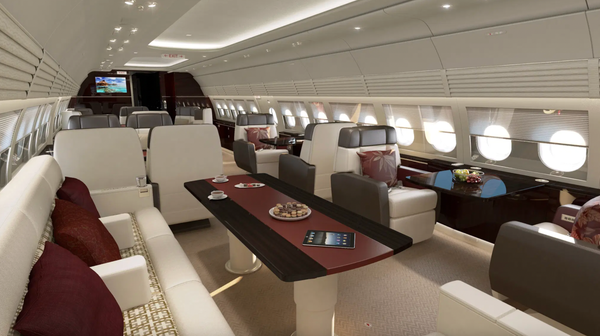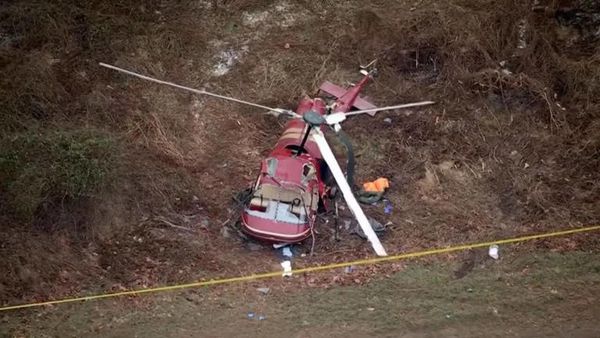A Boeing 737-800 operated by All Nippon Airways (ANA) made an unscheduled return to New Chitose Airport (CTS) in Japan on Saturday after a crack was discovered in the outermost layer of the cockpit window.

The Incident
While frightening for passengers and crew, the incident resulted in a safe landing and no injuries. Flight 1182, initially bound for Toyama Airport, was cruising at roughly 24,000 feet when the crack was discovered. According to ANA, the crack was confined to the outermost layer of the four-pane window system, the "second window from the right out of six windows in the cockpit," designed to withstand significant pressure and temperature changes.
The aircraft's pressurization and flight controls remained unaffected, and the pilots decided to return to Sapporo-New Chitose Airport as a precautionary measure. The plane landed safely at Sapporo-New Chitose shortly after the notification, and passengers were disembarked and accommodated while the aircraft underwent a thorough inspection. The cause of the crack is still under investigation, and ANA has stated that they will cooperate fully with any authorities involved.
"The safety of our passengers and flight crew is our priority and we apologize for the inconvenience," said a representative from ANA.

While the incident is certainly concerning, it's important to note that modern aircraft are designed with multiple layers of redundancy and safety features. The four-pane window system, for example, ensures that even if one layer cracks, the others remain intact, maintaining the integrity of the cockpit and preventing any loss of pressurization.
Similarly, the pilots' quick action in returning to the departure airport demonstrates the safety protocols in place throughout the aviation industry. Their decision to prioritize safety over schedule highlights the airline's commitment to ensuring the well-being of their passengers and crew.

More Bad News For Boeing?
However, the incident does raise questions about the potential for similar occurrences in the future. While the specific cause of this crack is still unknown, it's important to remember that Boeing has faced scrutiny in recent years over safety concerns, particularly with the 737 MAX model. The grounding of the 737 MAX following two fatal crashes in 2018 and 2019 has left many passengers understandably cautious about the safety of Boeing aircraft.
In response to these concerns, Boeing has implemented a series of modifications and safety enhancements to the 737 MAX. The aircraft was eventually recertified for flight in late 2020. Still, the incident with Flight 1182 serves as a reminder that caution and continuous improvement are crucial in ensuring air travel remains safe. When asked for comment, Boeing said: "Kindly reach out to the airline for comment."

The aviation industry will observe this incident, analyze the cause of the crack, and review existing safety protocols. Learning and improving from this isolated incident are valuable opportunities, ultimately contributing to safer skies for all passengers and crew.
The coming days and weeks will likely see a shower of investigations and analyses as authorities and aviation experts seek to understand the cause of this incident and implement any necessary changes to ensure the continued safety of air travel.
The crack in the cockpit window of Flight 1182 was a cause for concern. Calm and decisive action by the pilots to uphold safety guidelines set by airlines and authorities ultimately led to a safe landing and no injuries. As the airline awaits the investigation results, the aviation industry is expected to learn from this incident and continue to strive for increasing levels of safety.
Lufthansa Technik Unveils Major ACJ318 Elite Upgrade Program » KAL858: The North Korean Bombing that Shocked the World » Pentagon Alarm: China’s ‘Tailless’ 6th-Gen Fighter Prototypes Are Already Airborne »
Comments (0)
Add Your Comment
SHARE
TAGS
NEWS All Nippon Airways ANA Boeing 737-800 Boeing Incident Investigation Japan CTS SafetyRECENTLY PUBLISHED
 Lufthansa Technik Unveils Major ACJ318 Elite Upgrade Program
Lufthansa Technik (LHT) has officially announced a comprehensive cabin and technical upgrade program for the Airbus ACJ318 Elite, breathing new life into the "smallest" member of the Airbus Corporate Jet family.
STORIES
READ MORE »
Lufthansa Technik Unveils Major ACJ318 Elite Upgrade Program
Lufthansa Technik (LHT) has officially announced a comprehensive cabin and technical upgrade program for the Airbus ACJ318 Elite, breathing new life into the "smallest" member of the Airbus Corporate Jet family.
STORIES
READ MORE »
 Two Pilots Killed in Tragic Mid-Air Collision Near Hammonton Municipal Airport
A quiet Sunday morning in Atlantic County turned tragic when two helicopters collided mid-air, claiming the lives of two veteran pilots who were well-known in the local aviation community. The accident occurred on December 28, 2025, just miles from Hammonton Municipal Airport (N81).
NEWS
READ MORE »
Two Pilots Killed in Tragic Mid-Air Collision Near Hammonton Municipal Airport
A quiet Sunday morning in Atlantic County turned tragic when two helicopters collided mid-air, claiming the lives of two veteran pilots who were well-known in the local aviation community. The accident occurred on December 28, 2025, just miles from Hammonton Municipal Airport (N81).
NEWS
READ MORE »
 FAA Finalises AD to Resolve A350 Flight-Control Hazard
The Federal Aviation Administration (FAA) has issued a final rule, Airworthiness Directive (AD) 2025-25-12, aimed at eliminating a critical "runaway" flight control hazard affecting the Airbus A350-900 and A350-1041 fleets. The directive, published today, December 29, 2025, mandates the installation of new flight-control software to prevent uncommanded surface movements that could lead to a loss of aircraft control.
NEWS
READ MORE »
FAA Finalises AD to Resolve A350 Flight-Control Hazard
The Federal Aviation Administration (FAA) has issued a final rule, Airworthiness Directive (AD) 2025-25-12, aimed at eliminating a critical "runaway" flight control hazard affecting the Airbus A350-900 and A350-1041 fleets. The directive, published today, December 29, 2025, mandates the installation of new flight-control software to prevent uncommanded surface movements that could lead to a loss of aircraft control.
NEWS
READ MORE »



